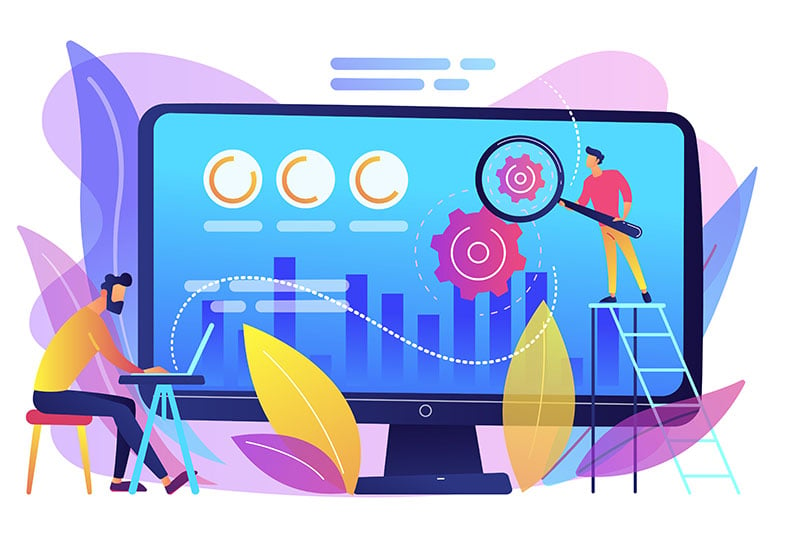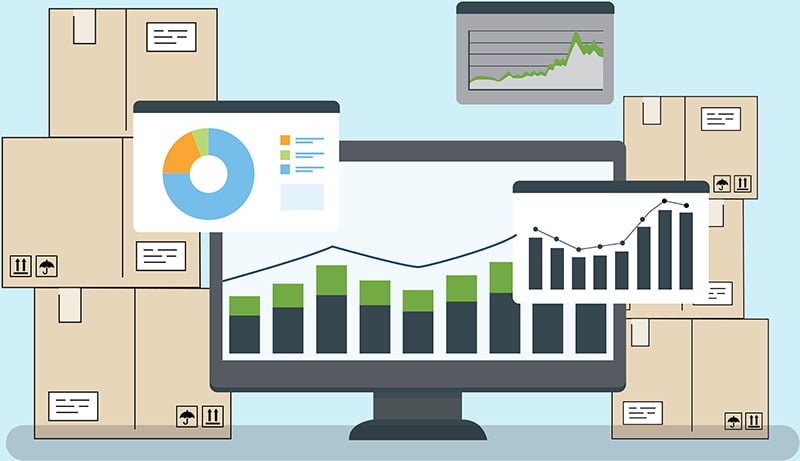Inventory optimization with analytics is a necessary part of any supply chain system. Businesses need to be able to estimate what they need and what they should order from their suppliers to meet demand. They should also be able to fit in the market with competitive pricing.
Predictive analytics for inventory optimization is being used in many industries such as manufacturing, retail, healthcare, and finance. It can help retailers with their inventory optimization by:
- predicting the buying patterns of consumers
- accurately forecasting demand
- reducing stock-outs
- identifying bottlenecks in the system
- lowering inventory costs
Analytics can be used to optimize inventory, determine customer behavior, and drive marketing campaigns.
How Does Inventory Optimization with Analytics Help with Competitive Pricing

With predictive analytics for inventory optimization, companies can now use data from past interactions with customers to forecast demand.
1. Forecasting Demand
Demand forecasting is used to predict future market trends and improve enterprise resource planning. Inventory optimization with analytics uses data from various sources. Data analysts use this data to find patterns in the past which can be used to predict future trends in business.
For example, inventory optimization with predictive analytics could help businesses forecast demand in specific regions. This would show where certain products are popular and where there is a decrease in demand. This would allow your business to plan ahead and manage production to reduce overstock, understock, and deadstock.
2. Pricing Optimization with Accurate Data
Businesses can use predictive analytics for inventory optimization to maximize profits. This involves identifying ideal price points based on the history of sales volume. Market conditions like currency exchange rates and inflation can also be considered.
A product's forecasted demand can determine whether or not it can be sold at a particular price. It can also determine the appropriate amount of buyers for that product at that price. Based on real-time data, the pricing can be adjusted accordingly to maximize sales. Inventory optimization with analytics enables you to offer products at reasonable prices for consumers without hurting your bottom line.
Inventory optimization with analytics has the potential to save money by avoiding costly pricing mistakes. Some of these issues may result from human error during manual calculations or delays in obtaining factual information. This is where access to real-time data becomes crucial.
3. Improved Customer Experiences with Pricing Data
Data analytics for inventory optimization can provide insights about customer behavior for specific buyer personas. You can identify customer segments and demographic data that can affect new product lines. This data can also be used to modify existing pricing strategies to meet market demands.
For instance, a retail store may use product-level data to create a customized experience for different customer segments. This includes providing lower prices for students, discounts for large families, and special offers for customers based on geographic data. In the end, this is one step towards improving customer satisfaction.
4. Managing Inventory Levels
Determining and maintaining an optimal inventory level can be difficult without access to the right data. When inventory levels are too high, a company may lose money by storing excess product and not selling it. Supply chain managers can use predictive analytics to establish the ideal inventory level for each location. They reduce safety stock and inventory this way, which avoids running low on materials and investing time into replenishing them.
It is important for a company to optimize its supply chain to minimize losses to improve the bottom line. Knowing when to start reducing inventory or increasing production is key to inventory planning. This can be done by using automated inventory management and real-time solutions. More issues can arise if the supply chain isn't managed properly.
Businesses with multiple distribution centers are able to determine where the stock is best kept to optimize order fulfillment. This is incredibly helpful to managers because it allows them to create better inventory management strategies.
5. Logistics and Transportation
Logistics play an important role in inventory management. Inventory optimization with analytics helps to reduce transportation costs which are a significant part of the final product price. Companies can use predictive analytics to determine the frequency and quantity of transportation required to meet demand while reducing costs.
Predictive route planning provides smarter, faster deliveries. It has been beneficial for e-commerce, but also for the retail industry and others, too. Controlling these factors is out of the question, but preparing for them will make competitive pricing much easier. This will allow your company to reduce lead time to bring products to market faster.
6. Better Supplier Selection
Procurement teams can benefit from using data to select better suppliers. Different suppliers will operate at different levels of efficiency. Data analytics for inventory optimization can take into consideration the following to help you determine the best suppliers:
- cost
- delivery time
- delivery method
- lead time
- technical capabilities
- product quality
- production capabilities
Based on this information, and other custom parameters, you can decide which suppliers you need to strengthen relationships with to grow your business.
7. Predictive Maintenance to Minimize Downtown
You can use predictive analytics for inventory optimization during production planning and scheduling. Your business can use predictive models to streamline maintenance and prevent expensive breakdowns. This reduces downtime and minimizes the risk of supply shortages.
Supply shortages can delay bringing your product to market at key times. It can remove the advantages that can come with a specific launch time like seasonal sales and holiday promotions. Competitive pricing is important to acquiring new and repeat customers because of the marketing that goes behind these timed launches.
The main goal is to predict equipment failure, calculate when failures are likely to happen, and take necessary preventative measures in advance. Predictive equipment monitoring solutions are a way to help businesses reduce costs related to unplanned downtimes.
Use Data Analytics for Inventory Optimization

Using analytics for inventory optimization can be powerful when combined with machine learning. You can enhance your bottom line and make your supply chain more responsive to market changes with inventory optimization. Having an integrated system with ended-to-end data solutions science is the place to start.
Looking to automate your data platform?
See how Mactores can help you today!


